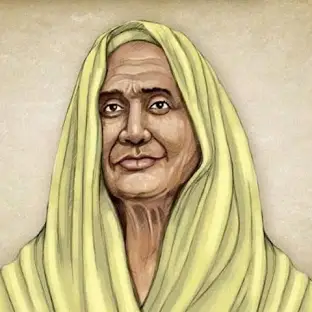
MANTANGINI
MANTANGINI HAZRA – The Forgotten Fighter
‘Unsung heroes don’t seek glory; their virtuous deeds speak louder than praise.’
India’s independence resulted from the freedom fighters who redounded their lives for the motherland. It is because of them that we are being able to walk and express ourselves freely. The sacrifices our freedom fighters have made for us cannot be measured. We know some notorious freedom fighters like Mahatma Gandhi, Netaji Subhas Chandra Bose, Bal Gangadhar Tilak and Bhagat Singh. But thousands of other unsung freedom fighters who gave their everything to support India’s Independence Movement faded from the books of history.
This essay discusses Mantangini Hazra, one of the lesser-known leaders of the Quit India Movement, Also appertained as “Gandhi Buri,” which translates as “old lady Gandhi.”
Born in a Bengali Mahishya family in village Hogla, near Tamluk in 1870, she was the daughter of a poor peasant and did not concede a formal education. She was married as a child and became widowed at the age of eighteen.
As a staunch Gandhian, Matangini Hazra had a keen interest in the Indian independence cause. The involvement of women in the Midnaporean freedom struggle was a noteworthy aspect. She participated in the Civil Disobedience movement in the year 1930 and was detained for violating the Salt Act. She was promptly released but then participated in the ‘Chowkidari Tax Bandha’ (abolition of chowkidari tax) movement while marching towards the court building chanting slogans to protest against the illegal constitution of a court by the governor to punish those who participated in the movement.
She was given a six-month prison sentence and lodged in the Baharampur jail Again, she was incarcerated for six months at Baharampur. Amid her time in prison, she learned more about the freedom struggle from other prisoners. After being released, she became an active member of the Indian National Congress and took to spinning her own Khadi. In 1933, she attended the subdivisional Congress conference at Serampore and was injured in the ensuing baton charge by the police. In the 1930s, Hazra returned to her humanitarian work of helping untouchables as soon as she was released from prison, in spite of her poor physical condition.
Always engaged in humanitarian causes, she worked among affected men, women, and children when smallpox in epidemic form broke out in the region. When Gandhi started the Quit India Movement in 1942, she requested to lead a protest to the Tamluk court and police station; however, she was rejected due to her elderly age. Soon after, her time to shine came. At the age of 72, old, Hazra led six thousand protesters to the Tamluk police station and court. During this dissent in Tamluk, she proudly carried the Indian national flag and led a procession, defying the ban on the flag’s display by the British authorities. Despite being mortally wounded, she continued to hold the flag and continuously chanted ‘Vande Mataram’, which translates to “hail the Motherland” in Hindi.
Matangini Hazra was 73 when she fell to British bullets, Her death made her a martyr, and one of the earliest casualties of the Quit India movement. Matangini Hazra survives as a manifestation of endless courage and authentic leadership. The first women’s statue in Independent India was set up in 1977 and it was of Matangini Hazra. This statue stands at the spot where she was killed in Tamluk.
The Department of Posts of India released a five-rupee postage stamp featuring Matangini Hazra’s portrait in 2002 as part of a series of stamps honoring sixty years of the Quit India Movement and the establishment of the Tamluk National Government.
Hazra was among the thousands of women who answered the Mahatma’s call to join the freedom struggle. Her unwavering determination, strength, and commitment to the cause of freedom have left an indelible mark on the history of India’s struggle for independence. Her advanced age and the dangers she endured, her persistent dedication to the cause of freedom serve as an inspiration to future generations of Indians. For all those who esteem India’s arduously achieved independence, she will always be remembered as a symbol of bravery and tenacity in the face of oppression and injustice.
By: Prabhmehar Kaur Khanduja
Write and Win: Participate in Creative writing Contest & International Essay Contest and win fabulous prizes.


